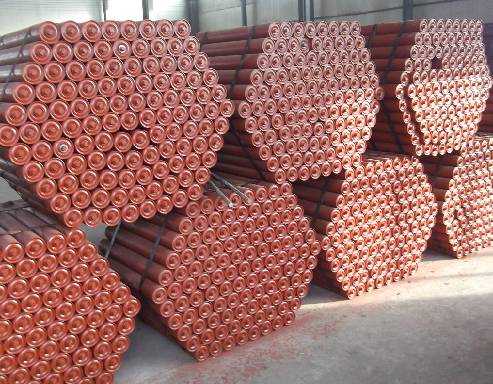 Afrikaans
Afrikaans  Albanian
Albanian  Amharic
Amharic  Arabic
Arabic  Armenian
Armenian  Azerbaijani
Azerbaijani  Basque
Basque  Belarusian
Belarusian  Bengali
Bengali  Bosnian
Bosnian  Bulgarian
Bulgarian  Catalan
Catalan  Cebuano
Cebuano  Corsican
Corsican  Croatian
Croatian  Czech
Czech  Danish
Danish  Dutch
Dutch  English
English  Esperanto
Esperanto  Estonian
Estonian  Finnish
Finnish  French
French  Frisian
Frisian  Galician
Galician  Georgian
Georgian  German
German  Greek
Greek  Gujarati
Gujarati  Haitian Creole
Haitian Creole  hausa
hausa  hawaiian
hawaiian  Hebrew
Hebrew  Hindi
Hindi  Miao
Miao  Hungarian
Hungarian  Icelandic
Icelandic  igbo
igbo  Indonesian
Indonesian  irish
irish  Italian
Italian  Japanese
Japanese  Javanese
Javanese  Kannada
Kannada  kazakh
kazakh  Khmer
Khmer  Rwandese
Rwandese  Korean
Korean  Kurdish
Kurdish  Kyrgyz
Kyrgyz  Lao
Lao  Latin
Latin  Latvian
Latvian  Lithuanian
Lithuanian  Luxembourgish
Luxembourgish  Macedonian
Macedonian  Malgashi
Malgashi  Malay
Malay  Malayalam
Malayalam  Maltese
Maltese  Maori
Maori  Marathi
Marathi  Mongolian
Mongolian  Myanmar
Myanmar  Nepali
Nepali  Norwegian
Norwegian  Norwegian
Norwegian  Occitan
Occitan  Pashto
Pashto  Persian
Persian  Polish
Polish  Portuguese
Portuguese  Punjabi
Punjabi  Romanian
Romanian  Russian
Russian  Samoan
Samoan  Scottish Gaelic
Scottish Gaelic  Serbian
Serbian  Sesotho
Sesotho  Shona
Shona  Sindhi
Sindhi  Sinhala
Sinhala  Slovak
Slovak  Slovenian
Slovenian  Somali
Somali  Spanish
Spanish  Sundanese
Sundanese  Swahili
Swahili  Swedish
Swedish  Tagalog
Tagalog  Tajik
Tajik  Tamil
Tamil  Tatar
Tatar  Telugu
Telugu  Thai
Thai  Turkish
Turkish  Turkmen
Turkmen  Ukrainian
Ukrainian  Urdu
Urdu  Uighur
Uighur  Uzbek
Uzbek  Vietnamese
Vietnamese  Welsh
Welsh  Bantu
Bantu  Yiddish
Yiddish  Yoruba
Yoruba  Zulu
Zulu Optimizing Conveyor Idler Performance for Enhanced Material Handling Efficiency and Longevity in Industrial Applications
Understanding Conveyor Idlers Essential Components for Efficient Material Handling
Conveyor idlers are critical components in the architecture of conveyor systems, serving as the support structure for the conveyor belt and playing a significant role in its efficient operation. These mechanical devices are primarily used to aid in the movement of bulk materials across various industries, including mining, agriculture, manufacturing, and logistics. This article delves into the functionality, types, and importance of conveyor idlers in material handling systems.
The Purpose and Functionality of Conveyor Idlers
Conveyor idlers are cylindrical rollers that are strategically placed along the length of a conveyor belt. Their primary function is to support the belt and the materials being transported, ensuring smooth operation and reducing friction. By minimizing contact between the belt and the pulleys, idlers help in prolonging the lifespan of the belt and enhancing the overall efficiency of the system.
Furthermore, idlers also contribute to maintaining the alignment and tension of the conveyor belt. Proper belt alignment is crucial to prevent wear and damage, which can lead to downtime and costly repairs. By facilitating the natural movement of the conveyor belt, idlers ensure that the transported materials remain secure and do not slip or misplace during transit.
Types of Conveyor Idlers
Conveyor idlers come in several types, each designed for specific applications and conditions
. The commonly used idler types include1. Flat Idlers These are the most basic type of idlers, featuring a simple cylindrical design. They are primarily used to support the load-carrying belt surface and are often employed in less demanding applications.
conveyor idler

2. Impact Idlers Designed to absorb shock, impact idlers are typically placed at loading zones where materials are fed onto the conveyor. Their robust construction helps protect the belt from damage caused by heavy loads.
3. Return Idlers These idlers support the return side of the conveyor belt, ensuring it maintains its form and alignment as it travels back to the loading zone. Return idlers are essential for preventing sag and ensuring the belt operates smoothly and efficiently.
4. Training Idlers Used to correct misalignment and keep the belt centered, training idlers play a significant role in maintaining the stability of the conveyor system. They actively guide the belt towards the intended track, minimizing wear and potential breakdowns.
5. Polymer Idlers These idlers, made from high-strength polymer materials, are lightweight yet durable, offering excellent resistance to corrosion and abrasion. They are ideal for applications where traditional metal idlers may corrode or wear out quickly.
The Importance of Quality Idlers
Choosing the right conveyor idlers can significantly impact the performance and reliability of material handling systems. High-quality idlers are essential for reducing friction, noise, and energy consumption while enhancing the stability of the conveyor system. They should be resistant to wear and tear, capable of withstanding harsh environmental conditions, and maintain consistent performance over time.
Regular maintenance of conveyor idlers is also crucial to prevent premature failure and costly downtime. Operations should regularly inspect and replace worn or damaged idlers to ensure the conveyor system functions optimally. Comprehensive maintenance practices help in achieving longer service life for both the idlers and the conveyor belt.
In conclusion, conveyor idlers are integral to efficient material handling operations. Their ability to support the conveyor belt, reduce wear, and maintain alignment makes them indispensable in various industrial sectors. Understanding the different types of idlers and their functions can help organizations make informed decisions for their conveyor systems, ultimately leading to improved productivity and cost savings. As industries continue to evolve, the significance of high-quality conveyor idlers remains paramount in achieving operational excellence.
-
Trusted Conveyor Solutions from Leading Conveyor Idler Roller ManufacturersNewsJun.27,2025
-
Reliable Return Idler Solutions for Efficient Belt Conveyor SystemsNewsJun.27,2025
-
Precision Conveyor Accessories for Streamlined Material HandlingNewsJun.27,2025
-
High-Quality Belt Conveyor Idler Solutions for Efficient Material HandlingNewsJun.27,2025
-
High-Performance Belt Conveyor Pulleys for Reliable Material HandlingNewsJun.27,2025
-
Enhancing Material Handling EfficiencyNewsJun.27,2025





























